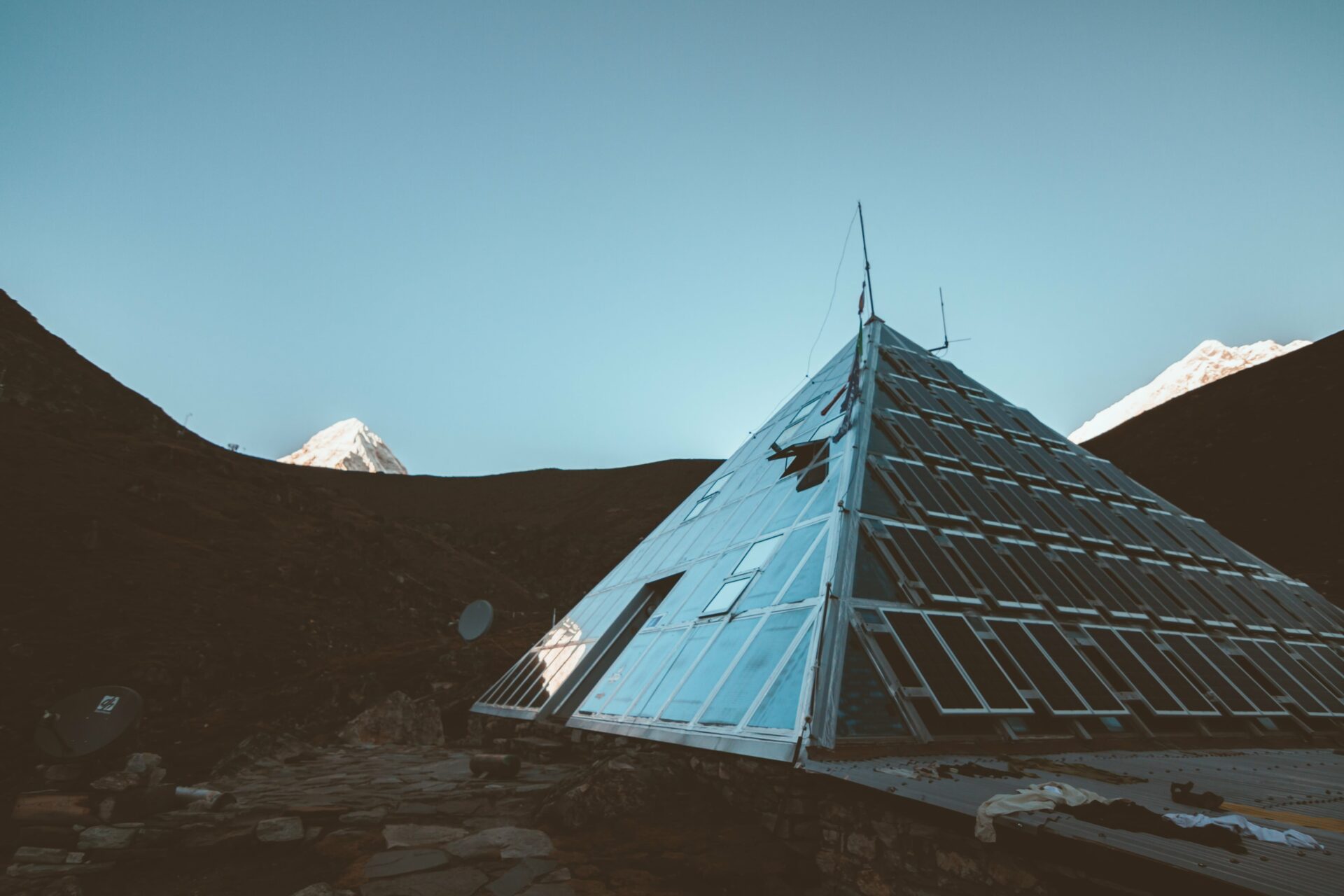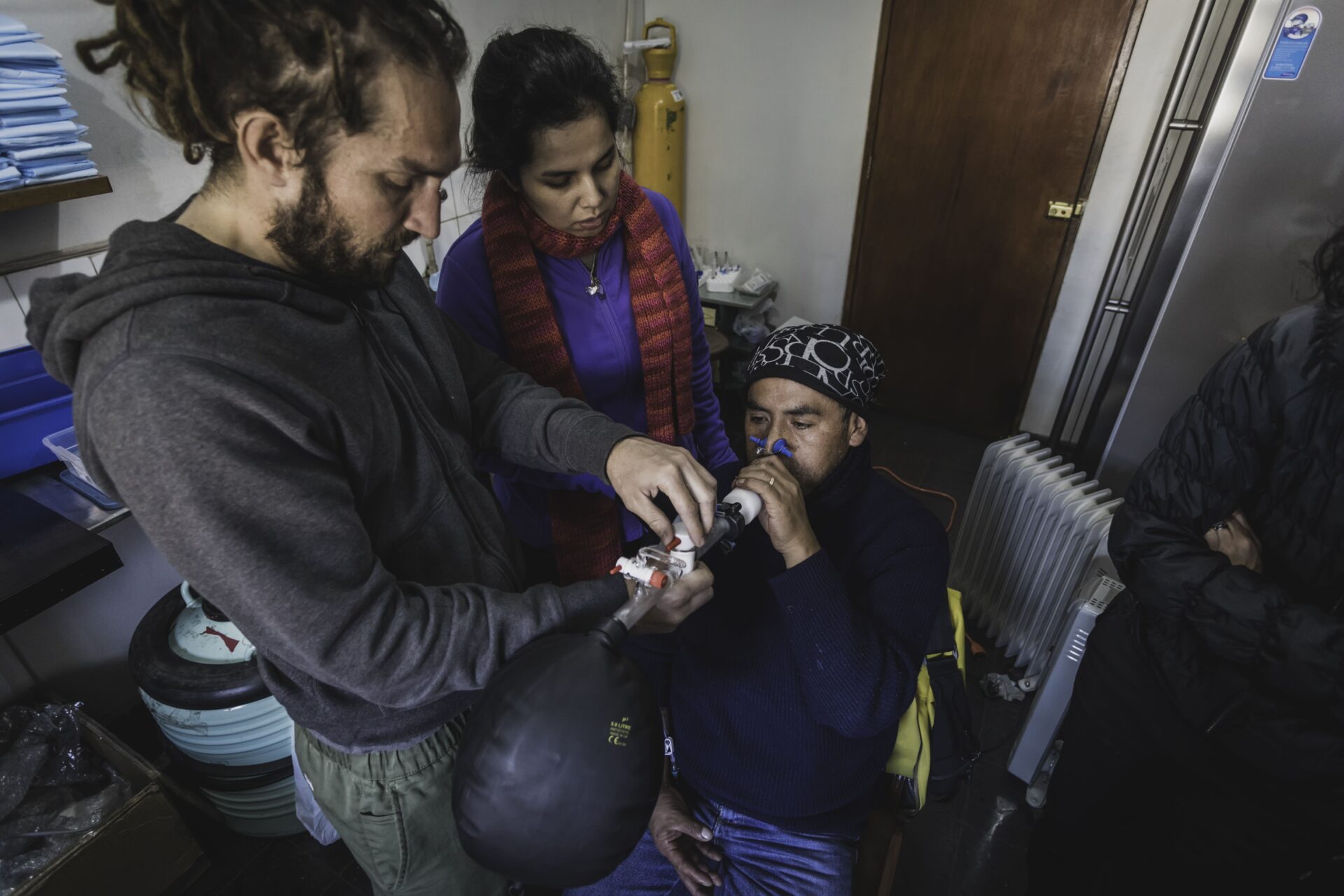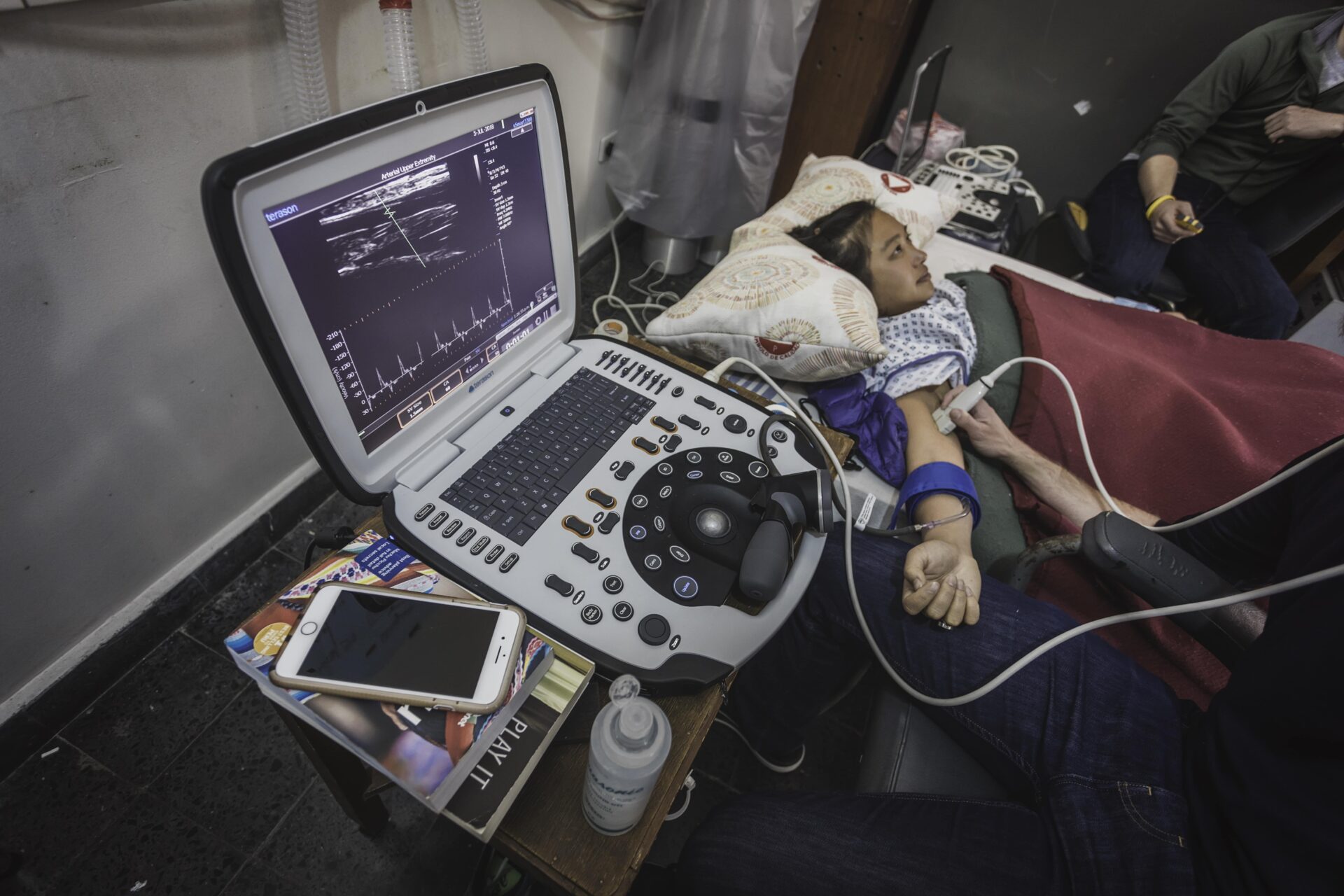Members from the Global Research Expedition team tell us about their latest expedition to Barcroft research station at White Mountain, California, US. Working at an altitude of 3800m, we find out about the range of fascinating studies being carried out to understand physiological responses to high-altitude.
By L. Madden Brewster, Christina D. Bruce, Emily R. Vanden Berg, Jennifer S. Duffy, Lauren E. Maier, and Justin A. Monteleone
What inspired your interest in high-altitude research?
It is safe to say that an overwhelming interest in human physiology is the basis for why many of us conduct high-altitude research. We find it intriguing to observe how the body adapts to the chronic exposure to low oxygen, understanding which components of various physiological systems adapt better or worse, and how it impacts additional tasks such as exercise. We can also study the variability in how individuals adapt, including the impact of differences such as biological sex.
Understanding human ability to adapt to unfamiliar environments, particularly ones which generate significant physiological responses like high-altitude, is not only exciting but applicable to real-world scenarios. For example, there are millions of people currently residing at altitude, including populations who have lived there for millennia, and have evolved with genetic adaptations to hypoxia. Not only do people permanently reside at high-altitude, many people travel to these regions for work and pleasure, meaning this research can directly inform health and safety practices for them.
In addition to understanding high-altitude residents and what might happen to those exploring high-altitude regions, we can extrapolate this research to clinical populations who experience chronic hypoxia, such as those living with chronic obstructive pulmonary disease or sleep apnea. By studying how healthy individuals respond to these conditions we may further understand how to manage hypoxia in a clinical scenario.
You are part of Global Reach, tell us how this group was formed?
Global Research Expedition on Altitude Related Chronic Health (REACH) was established in 2016 during a high-altitude research expedition to Nepal. The group was originally formed by an international amalgamation of students, principal investigators (professors), and physicians from around the world hoping to generate and answer various questions regarding how the human body reacts and adapts to high-altitude. More recently, in 2018, Global REACH traveled to Cerro de Pasco, Peru to study the chronic (mal)adaptations to high-altitude in the indigenous highlander population (Andean) as well as the acute effects of high-altitude in lowlanders. The most recent expedition to White Mountain was a continuation of Global REACH’s efforts.
The papers published by Stembridge et al., and Tymko et al., provide detailed overviews of the expeditions to Nepal and Peru, summarising the studies conducted and the findings.

How many expeditions have you carried out so far and what key questions about our physiology are you hoping to answer?
So far the formal Global REACH group has carried out three expeditions to Nepal, Peru and White Mountain, USA. However, many of the investigators of this group have been involved in countless high altitude research expeditions throughout their careers. The primary questions we hope to answer during these expeditions are how the various systems of the human body (cerebrovascular, sympathetic neurovascular, pulmonary, neuromuscular, and cardiovascular) adapt to acute and chronic high-altitude exposure.
We also aim to answer questions regarding the physiological adaptations of life-long high-altitude residents and indigenous highlander populations. For example, Global Reach has hopes of going to Ethiopia if the political and safety situation improves, as far less is known about the Amhara people who live in the Simien Mountains. We are also interested in exploring high-altitude areas in Antarctica, where altitude combined with cold exposure can exacerbate the degree of hypoxia.

You’ve recently returned from an expedition to The Barcroft Laboratory on White Mountain, California. What was the main focus of your field work and why did you choose it?
This expedition was a collaboration between multiple universities and hospitals across the world. The team remained at Barcroft Station, at an altitude of 3800 m (12,500 ft) for two weeks, to study cardiac, vascular, pulmonary, sympathetic and neuromuscular effects of high-altitude adaptation. One of the main goals was to have equal representation of males and females in every study; no previous expedition has had balanced sexes. This allowed sex differences in altitude adaptation to be an a priori outcome for many of the studies on this expedition.
What does a typical day look like on this type of expedition?
The expedition to Barcroft research station at White Mountain (elevation 3800 meters) consisted of days that were definitely not ordinary. There were three designated rooms where the research equipment was set up and studies were being conducted. Most days everyone was up by 6:30am to assist with data collection or act as a participant in upto three concurrent studies. The studies would continue throughout the day and sometimes extra data collection or equipment set up would happen in the evening which could require working until 10:00pm. When the researchers had a small break, they would eat meals or take food from the kitchen.
Fortunately, we worked with the best team at Barcroft; Steven and his team worked just as many hours as we did, cooking food, accommodating all our requests and helping us in every way they could. People would perform their work or study in the early morning or late at night as there was not much free time during the days. Being a study participant required specific dietary, fluid and exercise restrictions, so scheduling the events each day could be difficult.
When there were slower research days, most people would attempt to exercise in the hypoxic conditions as there were many scenic areas to hike or run in, which provided good stress release. With eight studies being done in fifteen days, there was intricate scheduling which needed everyone to be flexible about when they were participating or assisting in data collection.

Why are these expeditions valuable and what excites you about carrying out this type of research?
We can simulate high-altitude hypoxia at low altitude, but many of these studies use acute, short-term exposure. High-altitude expeditions allow us to examine physiological adaptations to hypoxia over longer periods of time; weeks or even months, while living in comfortable conditions. In addition, many acute hypoxia studies involve normobaric hypoxia; at high-altitude, hypoxemia is induced by lower barometric pressure in comparison to low altitude, which may cause different physiological effects.
Traveling to high-altitude locations also allows us to study high-altitude indigenous populations who reside there and have developed genetic adaptations that contribute to acclimatization. Another benefit to conducting field research expeditions to places like White Mountain, where we can travel to the research station by car, is that it allows us to bring a wide variety of equipment. This broadens the scope of projects and research questions that can be investigated.

What are the challenges?
Conducting human field research inevitably comes with a number of challenges that forces everyone involved to remain flexible and be highly optimistic. Traveling across borders with research equipment, consumables and pharmaceuticals can sometimes be a logistical nightmare. Thankfully, from years of experience and a considerable amount of planning, the majority of our equipment made it safely to White Mountain.
Once at Barcroft Station we experienced different kinds of challenges. For example, the first day we had multiple studies running at the same time, we were drawing too much electricity and had multiple power outages in the middle of testing. Luckily, thanks to an awesome team at the station, we were able to run all our equipment from a generator.
Scheduling was one of the greatest challenges of this expedition. We always had more than one study running, so we had to work around each other to act as participants and researchers, control for effects of drugs or exercise from other studies, and ensure we had available physicians when needed.
In addition to the challenges we faced by conducting many large-scale projects concurrently, many members of our group experienced symptoms of acute mountain sickness (AMS). AMS symptoms can include fatigue, nausea, headache, dizziness, loss of appetite, and shortness of breath. For two members of our team, these symptoms were compounded by testing positive for COVID-19 while at altitude. These members had to isolate for the remainder of the trip, and were unable to participate or assist with any data collection.
If possible, please can you share with us any observations or findings you made?
Right now we are working through a mountain of data, so it’s hard to say. However some early findings suggest that there may be high-altitude-related sex differences regarding skeletal muscle fatigability as well as pharmaceutical responses.
What are your plans for your next expedition?
Our first goal is to finish data analysis and determine the results of the studies from the expedition to Barcroft Station in 2022. Based on these findings we would like to conduct larger scale follow-up studies to some of the pilot studies we did on this trip. We are already looking into a follow-up trip back to White Mountain in 2023, to begin to address these findings and answer more questions about high-altitude physiology. We would also like to explore more mechanisms in sex-based differences and adaptations to altitude.

